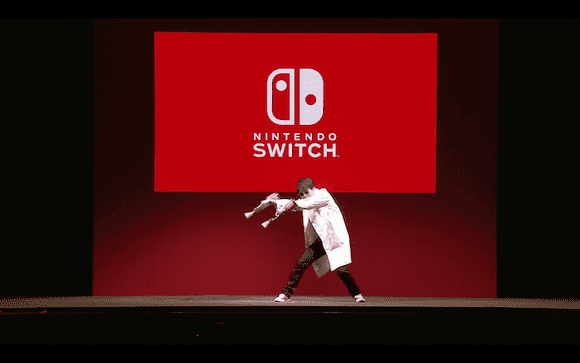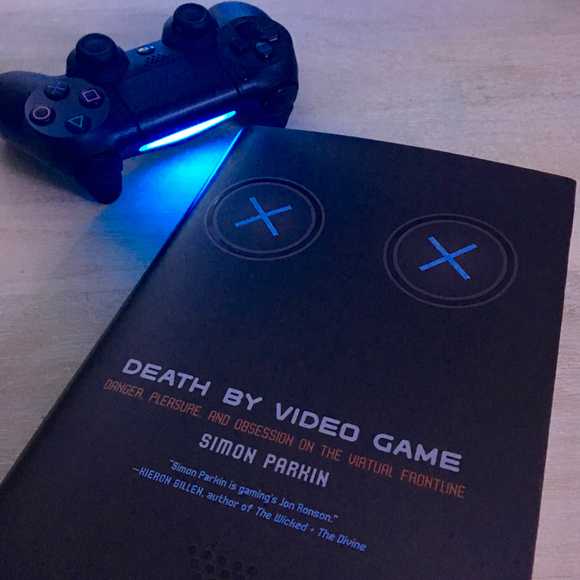On Friday, January 13 at 1 PM Japan Standard Time, Nintendo unveiled new details about their Switch “home” console. While hard tech specs didn’t make an appearance — I thought for sure Nvidia would have been showcased — deeper insight to the Joy-Con, play styles, and 2017 library were provided. Above all, what the keynote will be remembered for is an awkward Squid Researcher.
https://youtu.be/JsiRY521Nis?t=1774
Nintendo Switch will launch in “Japan, US, Canada, major European countries, Hong Kong, and other territories” on March 3rd. It will retail in Japan for ¥29,980, the US for $299.99, and varying prices in the European territories. Software will not be region locked, which is an incredibly big move for Nintendo.
Pre-orders for the Switch went up after the event and appear too have quickly depleted.
Presentation
As a whole, the presentation felt backwards and tonally awkward. Without building any hype, Nintendo opened with launch dates and pricing. The Joy-Con demonstration as well as the trailers for first-party titles 1-2-Switch and Arms felt long-in-the-tooth. At least two of the presenters garnered “WTF” moments that also seemed to throw off one of the translators. And then there was Hisashi Nogami’s Splatoon 2 appearance as a “Squid Researcher”.

Nintendo makes cute games and they’ve done cute things during presentations, but they’ve never struck me as outlandishly awkward. The Splatoon 2 portion sapped the presentation of its professionalism, which feels odd to say as it’s a game about squid children shooting paint at one another. At it’s core, Switch is a toy. But it’s audience doesn’t treat it that way. Nintendo is a global company. It has been since the Wii, and certainly before that to its core, 30-somethings audience.
Even for the crazy toymaker, there has been something professional about their presentations, marketing, and — since the Wii — industrial design. The latter of which is present in the Switch. The system’s design is as plain as ever and comes in stark contrast to a squirt-gun wielding executive taking the stage.
Switch
Note the quotes around “home” in my intro. Early in the presentation, Nintendo stated that the Switch is a “home” console:
7:45: “Nintendo Switch is a video game system for the home.”
8:14: “Nintendo Switch has been designed to be a home console gaming system that gives you the freedom to change your play style.”
Within 30 seconds, Nintendo hammered on the idea that Switch is built for the home. It felted pointed and explicit. It’s an important point. The Switch is intended to be the dream: a home console you can take with you.
Modes of play include:
- TV Mode: “Typical video game style.”
- Tabletop Mode: “Play video games in front of a screen with others, wherever you like, even away from the TV.”
- Handheld Mode: “Take it with you and play indoors, outdoors, or anywhere you like.”
On the point of battery life, Nintendo claims that the Switch will have two-and-a-half to six hours of battery life when in a portable mode. Studies show that 3 or more hours of gaming can being to have negative psychosocial effects.
The Switch will also offer 8-person local multiplayer in portable mode. Depending on adoption, this could be a killer feature. The capability alone screams that Nintendo is gunning for a new generation of portable gaming.
Last but not least, it was great to see Nintendo adopting USB-C. Color me shocked that Nintendo, the company that passed up HDMI on the 2006 Wii and was still using resistive touchscreens on the 2011 3DS and 2012 Wii U, would ship a device with the latest standard in USB technology.¹
Joy-Con
These are impressive little gizmos with a funny name. From what I could count, they include:
- 7 gameplay inputs (buttons) on each controller
- Analog stick
- NFC (shown on right, but presumably both)
- Home button (right)
- Camera button (left)
- Accelerometer and gyro sensors
- ”-” (left) and ”+” (right) buttons
- Motion IR camera (right only)
- HD rumble
The HD Rumble demonstration claimed that the sensation of a glass with one, two, or three ice cubes rattling as well as the glass filling up with water could be felt in a single Joy-Con. The best I could figure was that HD rumble include three independent rumble motors, allowing for altered effects.
It’s worth noting that when the Joy-Con are separated from the Switch itself, the right Joy-Con features a joystick in its center. I can’t imagine this feels great. I guess I’ll leave it up to a company that shipped a controller with an analog joystick in its center to make that call.
Games
We’ve known about The Legend of Zelda: Breath of the Wild since 2013. And the October 2016 announcement of Nintendo Switch teased a new 3D Mario game. Two staples we, without a doubt, knew we were getting. Even Skyrim was a fairly sure certainty for the platform.
The equivalent of Wii Sports for Wii and and Nintendo Land for Wii U, 1-2-Switch is Switch’s tutorial game. It looks extremely awkward, but I’ll blame that on the all to lengthy Mexican standoff demonstration. For better or worse, it was a solid reminder that Nintendo is a toy company.
Interestingly, Nintendo introduced a first-party fighter. But not just any fighter. In true Nintendo fashion, Arms is also a shooter of sorts. A fighter-shooter hybrid labeled as a “Fighting sports game.” It looks like it might even be fun without motion controls. Like other Nintendo franchises before it, it appears to feature a cast of (possibly) memorable characters such as Spring Man and Ribbon Girl. Will Arms be the next Wii boxing or Splatoon? What do you think of the name?
While Wii Remotes (how did they not go with “Wiimotes”?!) were available for Wii U, Switch seems like a much more natural fit for Splatoon. As far as motion control shooters go, I loved the feel of Metroid Prime 3 on Wii. It’s also nice to see Nintendo doubling-down on this new franchise.
Mario is out of the Mushroom Kingdom, and seeming into the real-world. At least for some portion of the game. Super Mario Odyssey is meant to evoke “the excitement when visiting unknown countries for the very first time.” The visuals look incredible, relying heavily on shadows and environmental physics. This is in contrast to another visually impressive Mario game — Super Mario Galaxy, which used an opposite lighting effect on Mario, providing a white shine around his model. While the visuals and openness of Super Mario Odyssey look sunning, there is something discomforting about seeing the cartoonish Mario next to Sim-ish humanoids. I’m most looking forward to this game.
I’ve always wanted to dive into the Xenoblade series, and this might be the title that does it. The art design is imaginative and the scale looks impressive. The blue armor and prominence of a helmet on one of the characters kept screaming “Mega Man” and had me scraping credits in search of any possible crossover. The one thing I couldn’t shake from this trailer was the scene of a character riding a lion-like creature. The frame-rate seemed very low and jittery. A similar jarring moment occurred during the Xenoblade Chronicles trailer in the Nintendo Direct 1.14.2015. (See my note mid-way down the page.)
Boy, oh boy, does this game look great! Next-level Paper Mario meets Retro Final Fantasy? It’s titles like this that make me excited for the portability of the Switch. Something about retro stylings screams “personal” and “portable” to me.
I’ve been itching for a portable version of Skyrim since I tried playing on Xbox 360. Skyrim is a game to get lost in; to spend hours with. But to spend hours taking over the TV in our house would be unconscionable. Needless to say, I never got more than three hours into this game on Xbox 360. I’m very much looking forward finally working through this game on my own portable screen.
There was a brief clip of a Street Fighter game during the final Switch video. Like others, I immediately thought we’d seen a glimpse of the Virtual Console on Switch. Alas, it appears to be a standalone version of Ultra Street Fighter II: The Final Challengers.
I kept wondering if the glimpses of Mario Kart throughout the presentation were a new Mario Kart game. But they appeared too similar to Mario Kart 8.
Low and behold, Nintendo will be re-releasing Mario Kart 8 for the Nintendo Switch as Mario Kart 8: Deluxe with some extra bells and whistles:
- Pop some balloons in the revamped Battle mode, complete with Balloon Battle and Bob-omb Blast.
- Inkling Girl & Inkling Boy from Splatoon, King Boo, Dry Bones, and Bowser Jr. join the roster!
- Players can choose a new Smart Steering feature which makes driving and staying on the track easy for novice players and kids even at 200cc
- Returning items include Boo, the item stealing ghost, and the Feather, which gives you a high jump in battle mode.
Mario Kart 8 is one of the greats. Some of my fondest video game memories are of playing that game. (Not to mention, my fondest Zero Counts moment!) I wholeheartedly agree with Stratechery’s Ben Thompson:
https://twitter.com/benthompson/status/819777416222502913
I don’t have much to say about Super Bomberman R. I was never a huge fan of the Bomberman series. I do recall playing a ton of Blaster Master Jr. on Game Boy. I mainly wanted call out my nostalgia and affection for Bomberman 64.
Breath of the Wild is a Switch launch title. Nintendo presented this as huge news, but it comes off more as a confirmation to quell fan fears. Beyond that, not too many additional details were given. The new, extended trailer showed off the breadth of the open Hyrule as well as new and familiar characters. And while cartoony, the tone of the narrative seemed fairly adult.
My favorite part was the Vanilla Sky ending to the entire presentation. Open your eyes…
Bringing It Together
At the very beginning of the keynote, Shinya Takahashi gave a quick run-through of Nintendo’s past consoles. It had a nice Apple-y touch, focusing on the innovation and lessons of the past to brought Nintendo to the Switch:
- Famicom (NES): Shipped with two controllers
- Game Boy: Pioneered portable video games as we know them today
- Super Famicom (SNES): Added X & Y and L & R shoulder buttons
- Nintendo 64: Introduced the first analog joystick and rumble (Rumble Pak) to a controller
- GameCube: Included a handle with the intention to be a home console could move from location to location
- Nintendo DS: Touchscreen portable gaming
- Wii: Brought motion controls to the mass market
- Wii U: Enabled console gaming off the TV
Without question, Switch is another unique and possibly industry changing device. Like Apple, Nintendo often skates to where the puck is headed, defining industry trends. And without question, the biggest dream of all is being able to take your home console on the go.
¹I am so thrilled that USB-C seems to be taking off like it is. Within months of Apple going whole hog on their MacBook and MacBook Pro lines, I’ve purchased a Drobo 5C and ROLI Lightpad Block that are also equipped with USB-C. Now I’ll be able to add Nintendo Switch to the mix.



